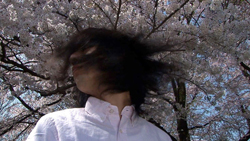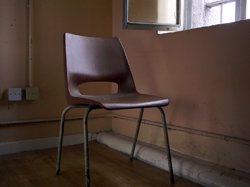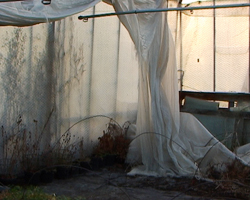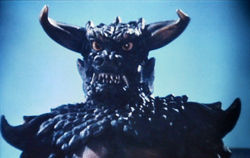 |
 |
||||||
 |
|||||||

Tomoko Inagaki studied at Middlesex Universit, in England and currently resides in Tokyo, Japan. Solo exhibitions include: 'Underneath the Twinkling Stars' at Krinzinger Projekte in Vienna, 2003. 'Dune/Trip' at PH Gallery in NY, 2005,'Outo', Centre des Art in Enghien les Bains, in France and 'Vomit' at Osaka Contemporary Art Center, in 2007. Selected also include: 'Mirage in Summer' at Gunma Museum of Art in Tatebayashi, 2005 . Image Forum Award in Japan, 2006.‘Twinism’ at Kunsthaus and stipended for ‘Kunstler zu Gast Harburg’, in Hamburg, 2009.‘Transmediale’ at The House of World Cultures in Berlin and Duo exhibition at Kunstverein Harburger Bahnhof in Hamburg, in 2010.

The goal of 'Pain Of War' is to point out the accelerated narrative rythm that we are used to watch on TV, which makes it impossible to deal with the problem of the pain of war in depth. So I decided to shoot in slow motion little plastic soldiers and set them on fire in my kitchen, to prove that even a plastic soldier can awake the espectator emotions if he takes enought time to watch it.
Toni Comaswas born in Spain and moved to Brooklyn to work on his documentary about the pain of war.He hasbeen a filmmaker and a professional editor for the last 10 years. Before coming to the US, he used to teach film studies in Barcelona.

‘When I Leave These Landings’ is the result of a highly intimate dialogue with political-prisoners, which took place between 2004 and 2009. The five-film installation, of which ‘Film E2-1B’ is a part, explores the impact of incarceration and extreme ideological conviction on self as experienced through the conflicting demands of paramilitary, prison, family and personal life. Focusing on personal experience rather than an organisation or the prison institution, the films have a contemporary and universal immediacy addressing as they do themes of incarceration, identity, ideology and political violence. Exploring the role of the prison in society and the ethics of representation are fundamental aspects of the practice.
Jonathan Cummins has spent nine years working with prisoners. 'When I Leave These Landings', as with other projects by the artist, has been created through negotiation and relationships built over time. The project is part of a participatory art practice, which employs education, dialogue and informed consent. Jonathan’s practice has been exhibited internationally at events such as Rencontres Internationales and at Le Centre Culturel Irlandais. He has also produced award winning short films. Jonathan studied sociology at Trinity College Dublin. He has an MFA in Media Arts from University of California Los Angeles where he also studied screenwriting.

Tale of a journey, tale of an exile.
Vianney Lambert was born in 1971. He works in Orléans, France.
He makes documentaries. Usually, he works alone. He works in 16 mm too.
He worked several years to make a film in a Nursing home, and an other from a soldier's diary
from the 1st World War that he found at the flea market. With friends he has founded a place, called Cent Soleils in Orléans
where people can see a different kind of documentary cinema. He also makes cinema workshops.

'Madame & Little Boy' is a video essay where historical lines and the circles of repetition in the life story of Choi Eun-hee are examined. Madame Choi and director Shin Sang-ok were kidnapped and brought to North Korea to produce films including the unfinished Pulgasari (1985), a Japanese-style monsterfilm based on a Korean legend and made in the vein of Godzilla. The genealogy of the monsters is interpreted as a series of deliberate messages about atomic weapons. Madame and Little Boy (the codename of the Hiroshima bomb) is narrated by the American musician Will Oldham in a studio building next to The Nike Missile Site outside San Francisco.
Magnus Bärtås is an artist, writer and professor of fine arts at Konstfack, Stockholm. He has recently exhibited at Platform-09, Seoul, Miroslav Kraljevic Gallery and The 4:th Bucharest Biennial. His video-works have been screened at Les Rencontres Internationales -09, Centre Pompidou, Gothenburg International Filmfestival, Moderna Museet, Stockholm and The Powerplant Gallery, Toronto. His video essay Madame & Little Boy won the Grand Prize at the Oberhausen International Filmfestival 2010. His dissertation (2010) You Told Me – Work stories and video essays, examines narrative models in contemporary art. Together with Fredrik Ekman he has published two books of essays and he also writes frequently for Cabinet Magazine.